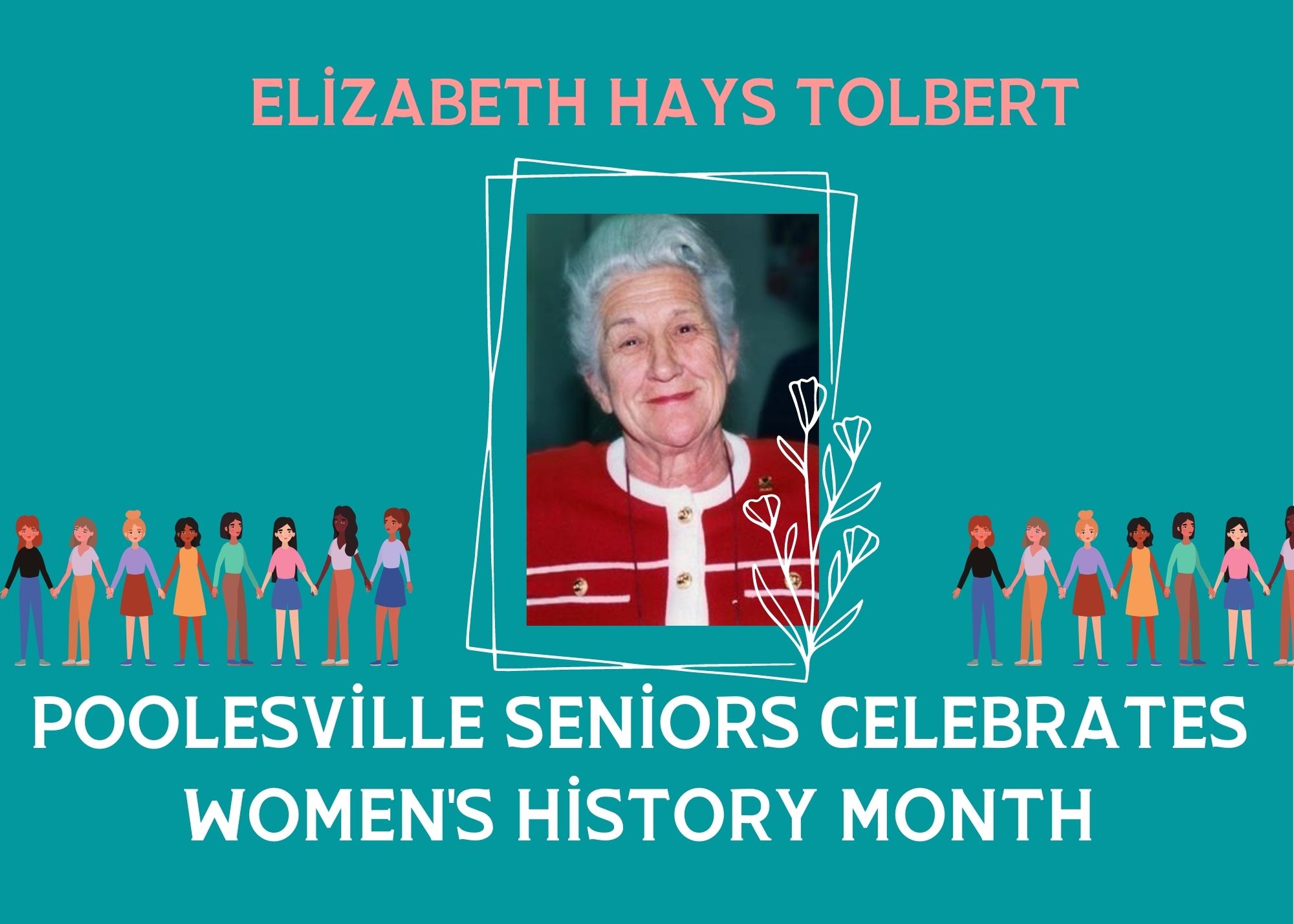As part of our celebration of Women’s History Month, Poolesville Seniors is highlighting one of our most accomplished, local women, the late Elizabeth Hays “Lib” Tolbert. Born December 5, 1925, Elizabeth Ray Hays was the daughter of a dairy farmer and a schoolteacher. Her father was a descendant of the surveyor of Barnesville in the 1700’s. She graduated from what is now St. Mary’s College of Maryland in 1942. In 1946, she married Samuel H. Tolbert, and accompanied him on Air Force assignments in Europe and across the United States. They had four children. In her 88 years on this earth, Lib was a Mother, a Mayor, and a Maryland Municipal League President. Lib was the fifth generation of her family to occupy the family home in Barnesville, Maryland, a town her ancestors helped found, and the third generation to serve as Mayor of this historic town.
Lib was a straight talker described in a Washington Post article as a “don of Montgomery County politics”. Those considering a run for office in Montgomery County or the state often came seeking her advice and counsel. As Mayor of Barnesville, she led one of the smallest municipalities in the state, but she was a political powerhouse. Once, during a meeting of the National League of Cities, Los Angeles Mayor Tom Bradley inquired about the population of Barnesville. It was 170, she stated. Bradley mistakenly thought she meant 170,000. Lib firmly corrected the record. Bradley asked why she was at the meeting? The question was answered when President Reagan came into the room, looked around, walked up to Lib and said, “Mayor Tolbert, so good of you to come”. She was twice invited to the White House. On one occasion, she was asked by a reporter if she was planning to stay for dinner with President Ronald Reagan and another of his guests, Mother Teresa. According to the reporting on the event, Lib replied no, that she was going home to pick peas.
As Mayor, Lib conducted much of her mayoral business at her antique mahogany table. She had a strong sense of both history and community and dedicated herself to the preservation of Barnesville as a small- town oasis in a rapidly developing Montgomery County. She used her influence and office to defend the county’s rural heritage, opposing, in vain, the placement of the Dickerson trash incinerator and the oft -proposed Potomac River bridge, which she warned would bury her community in an avalanche of traffic. That the Agricultural Reserve survives, and Barnesville remains the small, close-knit, and picturesque community it is today is a testament to her tenacity and love for her community.
*Source material for this article is an article in the February 2014 Washington Post, by Emily Langer and Legacy.com.

